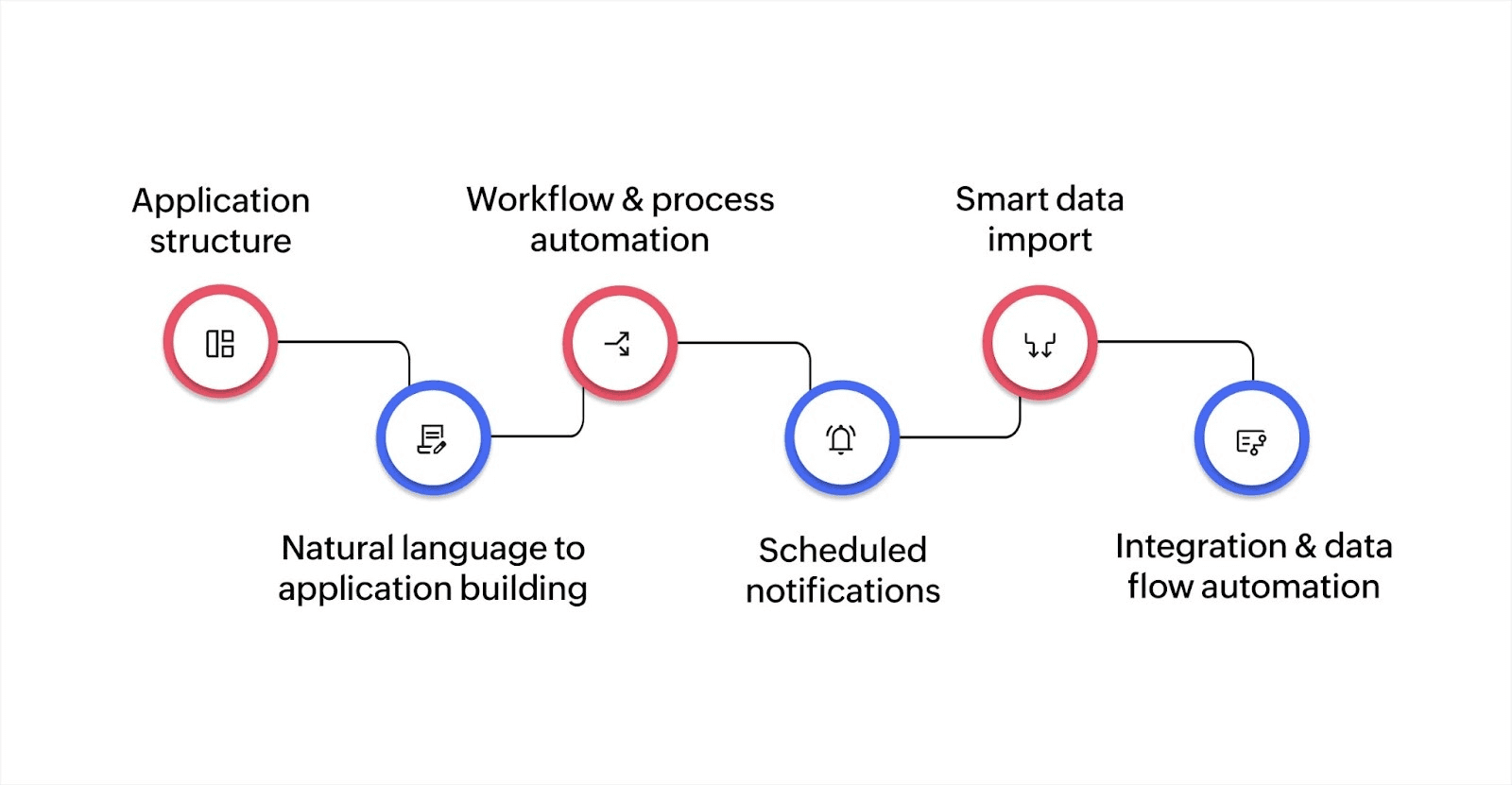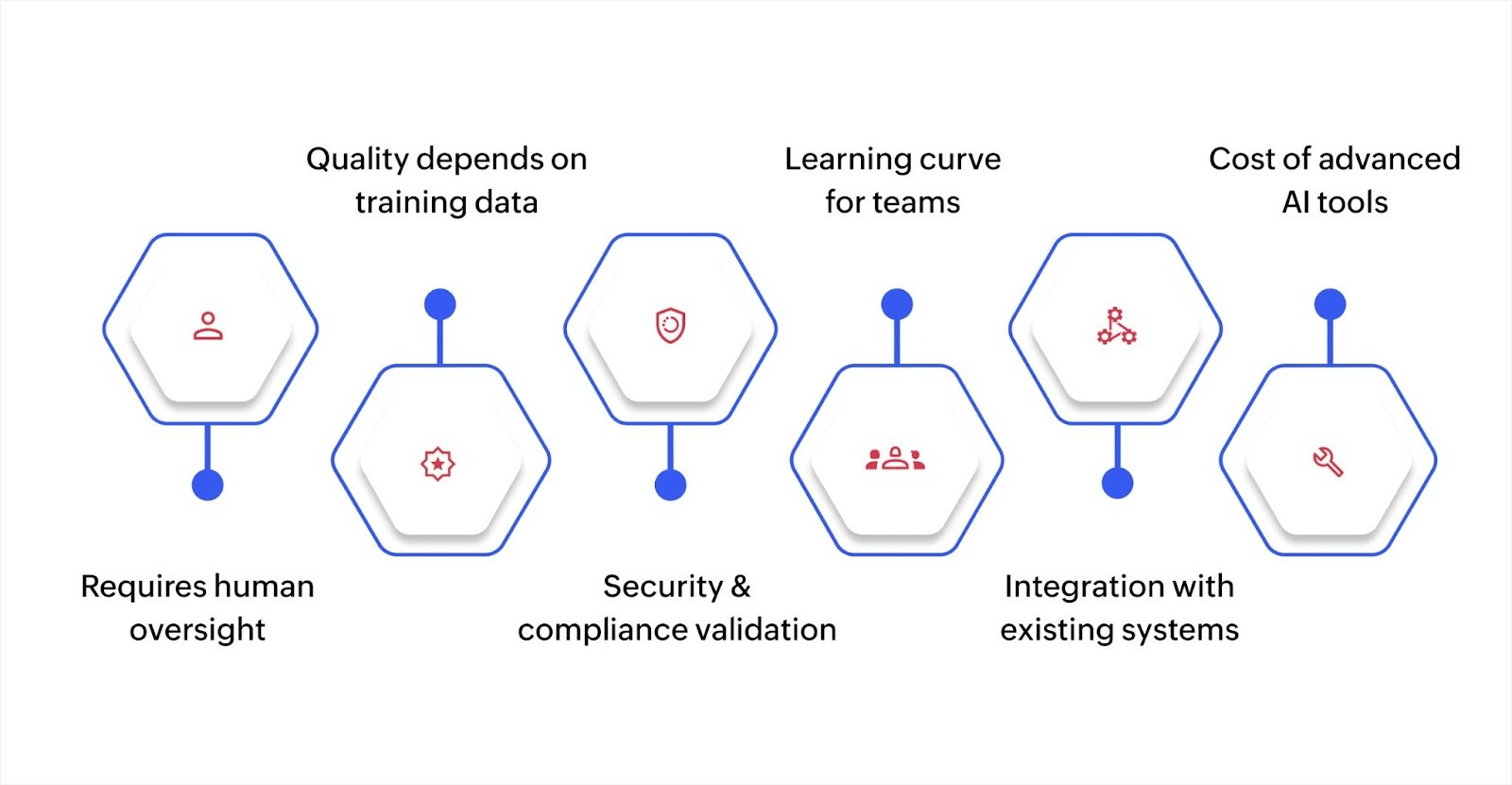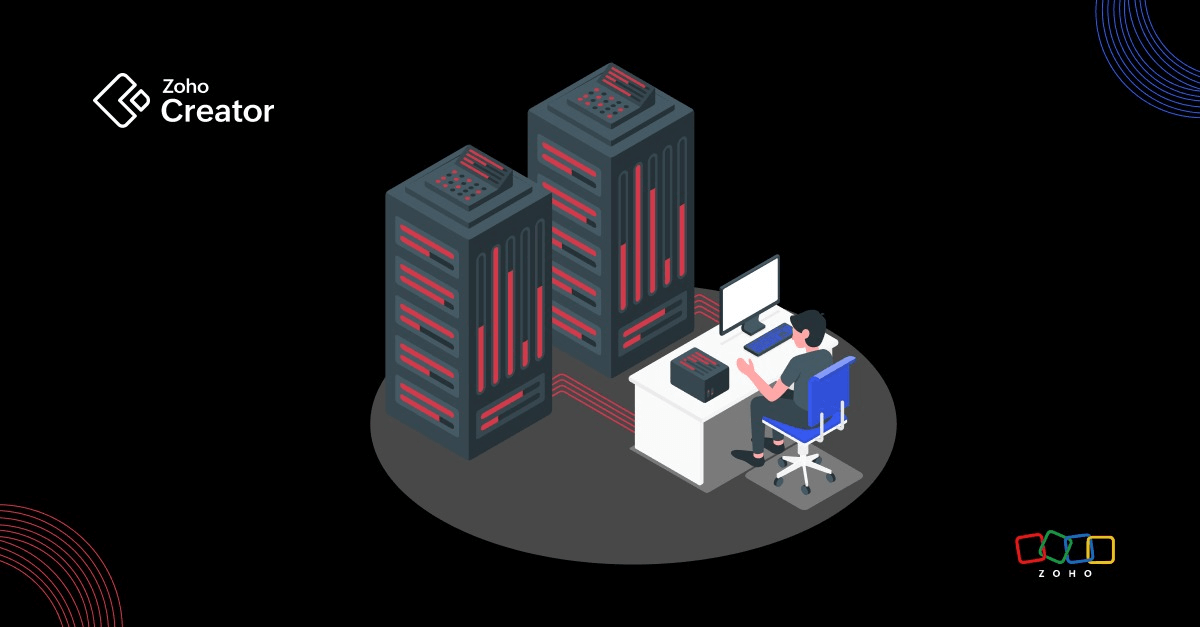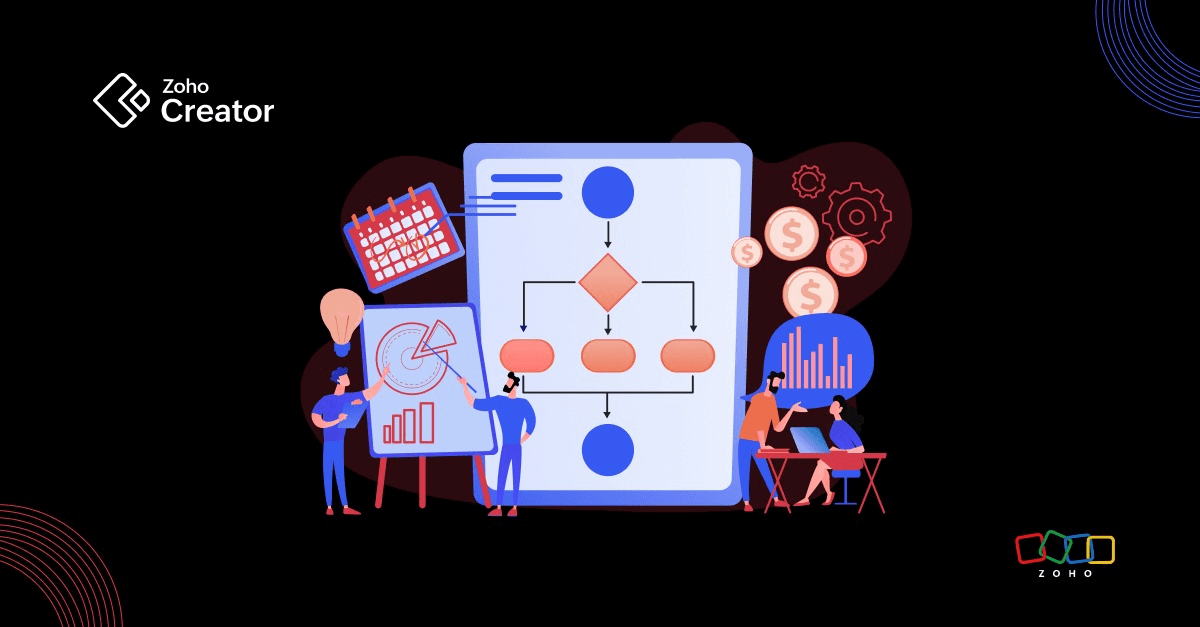- HOME
- Know Your Tech
- AI-assisted software development: Applications and benefits
AI-assisted software development: Applications and benefits
- Last Updated : November 25, 2025
- 168 Views
- 9 Min Read
Software development has always been resource-intensive. You need skilled developers, time, and budget to build applications that solve real business problems. But what if AI could handle the repetitive parts, suggest code, catch errors, and speed up the entire process?
Highlights
- AI-assisted software development turns simple descriptions into working applications with ready-to-use forms, workflows, and database structures.
AI technology suggests everything from database fields to approval flows, cutting planning time and reducing mistakes in application design.
Integrate business tools once and then let AI keep data flowing across platforms without manual intervention.
AI-assistance shrinks development timelines from months and days to just a few hours and costs significantly less than traditional development teams.
Human oversight remains critical for complex business logic, security validation, and ensuring AI outputs match actual requirements.
AI-assisted software development does exactly that. It uses artificial intelligence to help developers and non-developers build, test, and deploy applications faster and with fewer errors. According to recent data, 84% of developers are either currently using or plan to use AI tools in their development workflow, up from 76% the previous year. This rapid shift shows how practical and effective these tools have become.
If you're exploring ways to build software faster without hiring large teams or learning complex coding languages, you're in the right place. Learn more about what AI-assisted development is, its different applications, and how you can start using it today.
What is AI-assisted software development?
AI-assisted software development is the use of artificial intelligence to support and automate parts of the software creation process.
You get an intelligent assistant that understands application patterns, anticipates what you need, and speeds up tasks that would normally take hours or days. AI analyzes your requirements and offers suggestions for forms, fields, workflows, and data relationships based on similar applications.
For instance, if you're building a customer management system, an AI tool can suggest database fields like customer name, contact details, purchase history, and interaction logs. It can generate input forms automatically, recommend approval workflows for deal closures, and set up automated notifications when follow-ups are due. You focus on your specific business requirements while AI handles the structural setup.
AI-assisted development works across the entire development lifecycle, from planning and data modeling to workflow automation and deployment. Teams who need to move fast, have limited technical resources, or want to empower business users to build functional applications without coding find it especially valuable.
What are the key applications of AI in software development?

AI touches nearly every stage of development. Here's where it makes the biggest difference for businesses building custom applications:
Application structure and field suggestions
Custom application development platforms use AI to suggest how to structure your applications based on what you're trying to build. You describe your requirements and the AI recommends database fields, form layouts, and how different parts of your application should connect.
For example, if you're building a project management system, the AI can:
Suggest fields you'll need, like project name, client, budget, timeline, and team members.
Recommend how you should organize data across different forms and tables.
Propose relationships between projects, tasks, and resources.
Generate the basic structure so you can focus on customization.
This saves hours of planning and reduces the chance of missing critical components.
Natural language to application building
With AI-powered platforms, you can describe what you want to build in plain English, and the system will create the application structure for you—without you needing to know programming syntax or database design.
For instance, you could provide the following prompts:
"Build a vendor management system that stores supplier contact information, tracks contract renewal dates, monitors delivery performance scores, and maintains payment terms for each vendor."
"Create an asset tracking application that records equipment serial numbers, current location assignments, upcoming maintenance schedules, and condition status, and sends alerts when service is due."
"Set up a customer self-service portal where clients can submit support requests with file attachments, view real-time ticket status updates, access their order history, and download invoices and documentation."
The AI will generate forms, workflows, and dashboards automatically. You refine the details, but the AI handles the foundation.
Workflow and process automation
Business process automation tools use AI to analyze your workflows and suggest automation that saves time and reduces manual work. Instead of manually routing approvals, sending notifications, or updating records, AI helps you set up rules that handle these tasks automatically.
For example, when building a purchase approval system, AI does the following:
Suggests approval chains based on amount thresholds.
Recommends notification triggers at each stage.
Proposes conditional logic for different scenarios.
Creates automated status updates for requesters.
You get intelligent suggestions that match common business patterns, which you can then adjust to fit your specific needs.
Scheduled notifications and automated alerts
AI-powered schedules and notifications help you stay on top of critical business events without manual monitoring. The system analyzes your data patterns and suggests when and how to send alerts, reminders, and status updates.
For instance, in an inventory management application, AI can do the following:
Recommend daily stock level reports sent to warehouse managers.
Suggest immediate alerts when inventory falls below reorder points.
Propose weekly summary emails that show top-selling items and slow-moving stock.
Create reminder notifications for pending purchase orders that need approval.
You set the conditions once and the system handles timely communication automatically based on real data changes.
Smart data import and migration
Data migration tools powered by AI can transform messy data from spreadsheets and legacy systems into clean, structured databases. Instead of manually reformatting columns, fixing errors, and mapping fields, AI handles the heavy work.
For example, when importing customer data from multiple Excel files, AI does the following:
Detects duplicate entries and suggests how to merge them.
Identifies data format issues like inconsistent dates or phone numbers.
Recommends how to map old fields to your new database structure.
Cleans and organizes data automatically before import.
This turns hours of manual data cleanup into minutes of reviewing AI suggestions.
Integration and data flow automation
Data integration platforms use AI to help you connect different business tools and automate data movement between systems. You describe what information needs to flow where, and AI suggests the connections and triggers.
For instance, when connecting your sales and accounting systems, AI provides the following functionalities:
Recommends which data fields to sync between platforms.
Suggests triggers like "when a deal closes, create an invoice."
Proposes error-handling policies for failed syncs.
Maps data formats automatically across different systems.
You avoid manual data entry and keep all your tools updated without switching between platforms.
What are the benefits of AI-assisted software development?
Recent data shows that artificial intelligence in software development market stood at USD $674 million in 2024 and is expected to grow to USD $15 billion by 2033, representing a 42% compound annual growth rate between 2025 and 2033. This significant growth reflects the measurable value businesses are finding in AI-powered development tools.
Here's what you gain from implementing an AI-assisted software development process:
Faster development cycles: AI automates repetitive tasks like code generation, testing, and debugging, all of which cuts development time significantly. What used to take weeks can now take days.
Lower development costs: Automating manual work reduces the need for large development teams and expensive contractors, making custom software more affordable for small and mid-sized businesses.
Accessibility for non-developers: AI-powered low-code platforms enable business users to build functional applications without deep programming skills, which democratizes software creation.
Scalability without complexity: AI handles the technical details so you can build and scale applications without worrying about infrastructure, optimization, or deployment complexities.
Continuous learning and improvement: AI systems learn from your development patterns and suggest better approaches over time, making your workflow more efficient with each project.
Most businesses already using AI-assisted tools experience faster launches, fewer post-deployment issues, and more time to focus on features that differentiate their products. The teams building tomorrow's applications work with AI to move faster and build better.
What are the challenges of AI-assisted software development?

AI makes development faster, but it does have limitations. It's important to understand where AI can help and where human judgment is still required. Here's what to consider as you adopt AI-assisted development:
Requires human oversight for complex logic: AI can generate code and suggest workflows, but it doesn't always grasp nuanced business requirements. You need to review outputs and ensure they align with your goals.
Training data quality: AI tools learn from existing code patterns. If its training data includes outdated practices or security flaws, AI might replicate those issues.
Security and compliance validation: AI-generated code may not always meet industry-specific security standards or compliance requirements. You need to validate outputs, especially for sensitive applications.
Learning curve for teams: Adopting AI-assisted tools requires training and adjustment. Teams need to learn how to work with AI suggestions, when to override them, and how to refine outputs.
Integrations with existing systems: AI tools work best when integrated into your development environment. Setting up these integrations and ensuring compatibility with legacy systems can take time.
Cost of advanced AI tools: While AI reduces development costs long-term, some enterprise-grade AI tools come with significant upfront investments or subscription fees.
The key is to treat AI as a powerful assistant, not a replacement for humans. You guide the strategy, define requirements, and validate results while AI handles the execution.
Start building applications easily with Zoho Creator
AI-assisted development works best when paired with a platform built for speed, flexibility, and real-world business needs.
Zoho Creator is an AI-powered low-code application development platform that combines intelligent automation with intuitive design tools. You can build custom applications for any business need without writing complex code.
How Zoho Creator solves AI development challenges
Instead of struggling with AI tools that need constant oversight and technical validation, Zoho Creator's AI assistant, Zia, works differently.
You describe what you want to build in plain English, and Zia converts your requirements into working applications with proper database structures, workflows, and user interfaces. This prompt-to-app approach reduces development time from months to days because you skip the technical translation layer entirely.
For example, you can prompt, "Build a customer onboarding system that collects documents, routes approvals based on deal size, and sends automated follow-up emails," and get a functioning application with all the necessary forms, approval flows, and automated notifications. Zia understands your business needs—not just code patterns—so it suggests workflows that match real business scenarios in your industry.
This approach also solves the integration complexity that usually comes with AI development projects. Zoho Creator already connects with over 1,000 business tools, so when you build applications, the system automatically suggests relevant integrations and data flows.
BigBasket built a complete CapEx procurement ERP using Zoho Creator that automated their procurement process. The system handles everything from budget planning and purchase requisitions to vendor management and invoice processing across 600 vendors. This automation helped them save ₹3 crores (USD $360,000) in six months while reducing task completion time by 50%.
Here's how Zoho Creator makes AI-assisted development easy and convenient for you:
Enterprise security: Built-in security features, audit logs, and data encryption ensure applications meet industry standards without additional security validation work.
Mobile app development: Applications work seamlessly on web, iOS, and Android devices without separate development, which addresses the complexities and challenges of using multiple platforms.
Application templates: Start with effective, industry-specific templates that avoid outdated practices and ensure quality patterns from day one.
Visual development tools: Drag-and-drop builders, combined with AI assistance, let business users build complex applications without deep technical expertise.
Flexible pricing plans: Get enterprise-grade AI capabilities without massive upfront investments—starting with a free trial and scaling as your needs grow.
"The value that Zoho Creator adds to our business is priceless. The database, the integrations, the support—everything is beyond excellent."
- Hervé Haurie, Managing Partner, deSIAM
Thousands of businesses have already moved from spreadsheets and manual processes to custom applications built on Zoho Creator. Start your 15-day free trial today and see how fast you can build what you need.
FAQ
1. Can non-developers use AI-assisted software development tools?
Yes, AI-powered low-code platforms enable business users to build applications without deep programming knowledge. The AI handles technical details while you focus on defining requirements and workflows using visual tools.
2. What types of applications can you build with AI-assisted development?
You can build internal tools, customer portals, project management systems, inventory trackers, CRM systems, and core business applications. AI-assisted platforms support a wide range of use cases across industries.
3. Is AI-assisted development secure?
Security depends on the platform you choose. Reputable AI-assisted development platforms include built-in security features like data encryption, access controls, and compliance certifications. Always validate that your generated code meets your security requirements.
4. What industries benefit most from AI-assisted software development?
Any industry that needs custom software benefits, including retail, healthcare, finance, logistics, education, and professional services sees value in AI-assisted development—especially those that need to build and iterate quickly.
5. Can AI-assisted tools integrate with existing software?
Yes, most AI-assisted development platforms offer integrations with popular business tools, APIs, and databases. You can connect your applications to CRMs, payment systems, accounting software, and other tools you already use.
 Bharathi Monika Venkatesan
Bharathi Monika VenkatesanBharathi Monika Venkatesan is a content writer at Zoho Creator. Outside of work, she enjoys exploring history, reading short novels, and cherishing moments of personal introspection.



